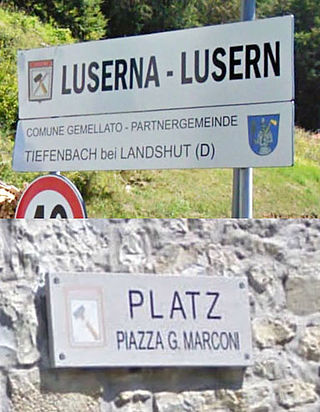Luserna
Luserna
Comune in Trentino-Alto Adige/Südtirol, Italy
Luserna (Cimbrian: Lusérn, German: Lusern) is a comune (municipality) in Trentino in the northern Italian region Trentino-Alto Adige/Südtirol, located about 25 kilometres (16 mi) southeast of Trento. As 2021, it had a population of 271 and an area of 8.2 square kilometres (3.2 sq mi).[3]
Luserna is part of the Magnificent Community of the Cimbrian Highlands (Altipiani Cimbri) together with the municipalities of Lavarone and Folgaria. In the tourist sphere it is part of the Alpe Cimbra. It is one of I Borghi più belli d'Italia ("The most beautiful villages of Italy").[4]
Lusérn borders the following municipalities: Caldonazzo, Lavarone, Levico Terme, Pedemonte, Rotzo and Valdastico.


